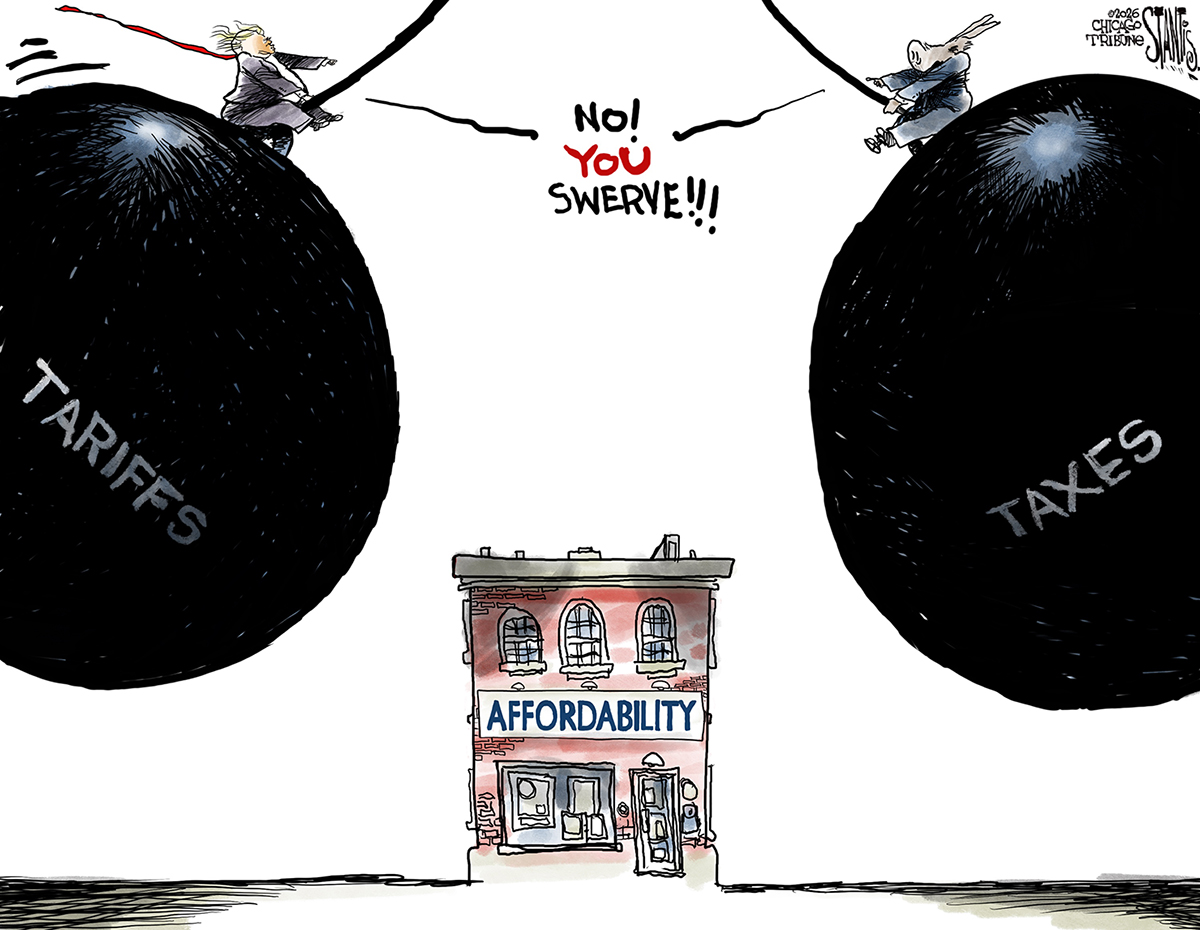Exhibit of the week: Italian Futurism, 1909–1944: Reconstructing the Universe
Italian futurism has long been “the most neglected canonical movement in modern art,” as well as “the most embarrassing.”
Solomon R. Guggenheim Museum, New York City
Through Sept. 1
Italian futurism has long been “the most neglected canonical movement in modern art,” as well as “the most embarrassing,” said Peter Schjeldahl in The New Yorker. The artists who lined up behind poet and ringleader Filippo Tommaso Marinetti produced some “superb” paintings and sculptures from 1909 on. But bombast and an eventual embrace of fascism did futurism’s legacy no favors. In the movement’s founding manifesto, Marinetti celebrated speed, machinery, and virility, but also toasted war as “the world’s only hygiene” and explicitly vowed to exhibit contempt for women. The ugly, over-the-top manifestos never stopped. But Marinetti and his gang invented the notion of a programmatic avant-garde, providing “a template for insurrectionary culture” that’s still with us. Wandering through this major survey at the Guggenheim, you can still feel their radical energy.
The Week
Escape your echo chamber. Get the facts behind the news, plus analysis from multiple perspectives.

Sign up for The Week's Free Newsletters
From our morning news briefing to a weekly Good News Newsletter, get the best of The Week delivered directly to your inbox.
From our morning news briefing to a weekly Good News Newsletter, get the best of The Week delivered directly to your inbox.
“The Guggenheim show is unique in that it represents the whole course of futurist history,” said John Dorfman in Art & Antiques. The most important artists from the movement’s pre–World War I “heroic” phase make their expected appearances: Giacomo Balla’s The Hand of the Violinist (1912) repeats the musician’s hand and blurs lines to suggest rapid motion. Umberto Boccioni’s “astonishing” Elasticity (also 1912) includes such a rainbow of blurred figures that “one starts to feel frequencies, speeds of electromagnetic vibration, rather than simply hues.” But there are “remarkable discoveries” to be made in the galleries devoted to the second-phase futurists, including Tullio Crali’s aerial paintings and a series of five murals painted by Marinetti’s wife, who was known simply as Benedetta. Oddly, for all of futurism’s preoccupation with technology, the movement’s “most characteristic medium” was “good old-fashioned painting.”
Not that traditional media were the futurists’ strong suit, said Roberta Smith in The New York Times. Many of the paintings and sculptures on view look so dated “they almost seem like satires of modernism.” But the movement “had a liberating effect on many mediums, laying the groundwork for much of what we view as advanced poetry, music, performance art, and graphic design.” The noise music of Italian composer Luigi Russolo set the stage for John Cage, for instance, and it’s “hard to imagine Dada without futurism’s declamatory poetry and riotous performances of the same.” Two short films provide a taste of how the audience responded to Marinetti onstage, and he also contributes several “word drawings” that are among the most spectacular two-dimensional works from the movement’s early years. “Seeing futurism morph and take on new mediums and ideas enriches its story.” Its lesser-known corners look to be well worth exploring.
A free daily email with the biggest news stories of the day – and the best features from TheWeek.com
-
 Political cartoons for January 18
Political cartoons for January 18Cartoons Sunday’s political cartoons include cost of living, endless supply of greed, and more
-
 Exploring ancient forests on three continents
Exploring ancient forests on three continentsThe Week Recommends Reconnecting with historic nature across the world
-
 How oil tankers have been weaponised
How oil tankers have been weaponisedThe Explainer The seizure of a Russian tanker in the Atlantic last week has drawn attention to the country’s clandestine shipping network